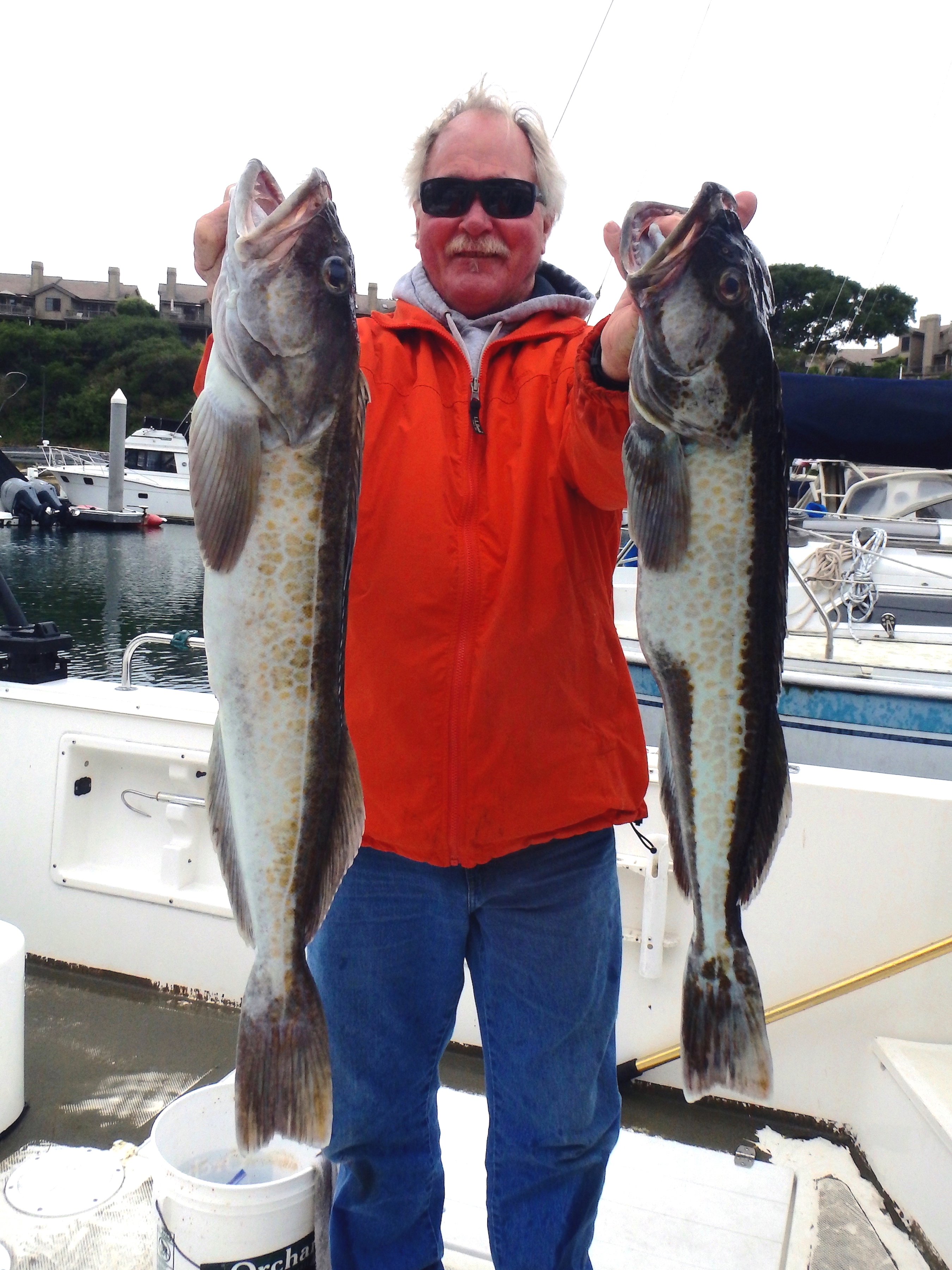Arizona Fish Report
Fish Report for 3-22-2018
Fish Report for 3-22-2018
Sentinel/Herald Fish Report

by Allen Bushnell
3-22-2018
Website
Our long winter’s wait is just about done. The 2018 season for rockfish, cabezon and greenling (the RCG Complex) opens a week from tomorrow on Saturday April 1. Monterey Bay anglers are experiencing that curious mix of relief and anticipation as the date draws near.
Regulations for the this season will remain essentially the same as last year’s. Bag limit is 10 rockfish per angler per day. Within that bag limit we are allowed to keep only one canary rockfish, three black rockfish and three 15-inch minimum length cabezon. Kelp and rock greenlings are also included within the aggregate 10-fish RCG daily bag limit, and must measure at least 12 inches for retention. A separate limit of two lingcod may be kept as a daily bag and possession limit as well. Lings must measure 22 inches minimum.
Cowcod and yelloweye rockfish remain on the “no-take” list. Because they are a deep-water rockfish, cowcod are seldom seen or hooked in our area. Yelloweyes are also uncommon, but we’ve seen an uptick in numbers caught and released over the past few years on boats operating within the 300-foot depth limit, our current regulation. The yelloweye closely resemble vermilion (red) rockfish as well as the canary rockfish. The California Department of Fish and Wildlife has an excellent flyer available online that details the differences between these three species.
All three species can vary between a yellowish orange to a deep red. All have a visible lateral line down the side of the body but the canary lateral is most distinct amongst the three. “A thick clear gray-white band” is how the DFW describes the canary lateral line.
For easy reference, remember the vermilion has a rough-feeling chin and maxillary (upper jaw). Canaries and yelloweyes have a smooth chin and maxillary. “Tickle the chin, and throw it back in.” The yelloweye is also distinguished by raspy area above the eyes. And, as the name implies, the eyes are distinctly yellow.
Both the canary and yelloweye rockfish are acutely sensitive to barotrauma. That is the inability for the fish to handle rapid decompression as it’s reeled up to the surface. All yelloweye must be released immediately, and all canaries after the one in your bag need be returned as well. Pulled up from even 60 feet of water, their swim bladders can inflate, making it impossible for the fish to return to the pressurized depths by its own efforts. For this reason, every boat “should” have a descender device to reduce fish mortality. Various implements are available commercially, and an upside down milk crate with weights on the bottom tied to a rope works just fine. Once the crate reaches a certain depth, the fish recovers and swims away safely.
Regulations for the this season will remain essentially the same as last year’s. Bag limit is 10 rockfish per angler per day. Within that bag limit we are allowed to keep only one canary rockfish, three black rockfish and three 15-inch minimum length cabezon. Kelp and rock greenlings are also included within the aggregate 10-fish RCG daily bag limit, and must measure at least 12 inches for retention. A separate limit of two lingcod may be kept as a daily bag and possession limit as well. Lings must measure 22 inches minimum.
Cowcod and yelloweye rockfish remain on the “no-take” list. Because they are a deep-water rockfish, cowcod are seldom seen or hooked in our area. Yelloweyes are also uncommon, but we’ve seen an uptick in numbers caught and released over the past few years on boats operating within the 300-foot depth limit, our current regulation. The yelloweye closely resemble vermilion (red) rockfish as well as the canary rockfish. The California Department of Fish and Wildlife has an excellent flyer available online that details the differences between these three species.
All three species can vary between a yellowish orange to a deep red. All have a visible lateral line down the side of the body but the canary lateral is most distinct amongst the three. “A thick clear gray-white band” is how the DFW describes the canary lateral line.
For easy reference, remember the vermilion has a rough-feeling chin and maxillary (upper jaw). Canaries and yelloweyes have a smooth chin and maxillary. “Tickle the chin, and throw it back in.” The yelloweye is also distinguished by raspy area above the eyes. And, as the name implies, the eyes are distinctly yellow.
Both the canary and yelloweye rockfish are acutely sensitive to barotrauma. That is the inability for the fish to handle rapid decompression as it’s reeled up to the surface. All yelloweye must be released immediately, and all canaries after the one in your bag need be returned as well. Pulled up from even 60 feet of water, their swim bladders can inflate, making it impossible for the fish to return to the pressurized depths by its own efforts. For this reason, every boat “should” have a descender device to reduce fish mortality. Various implements are available commercially, and an upside down milk crate with weights on the bottom tied to a rope works just fine. Once the crate reaches a certain depth, the fish recovers and swims away safely.
More Reports

3-16-2018
And the winner is…. Steve Griffin from Monterey pulled into the parking lot at Portuguese Hall a little after 11 a.m....... Read More
3-9-2018
Weather and sea conditions were kind of pleasant this week. Windy afternoons had whitecaps showing, but most mornings and a...... Read More

Arizona.FishReports.com © 2024. All Rights Reserved.
Website Hosting and Design provided by TECK.net
Website Hosting and Design provided by TECK.net